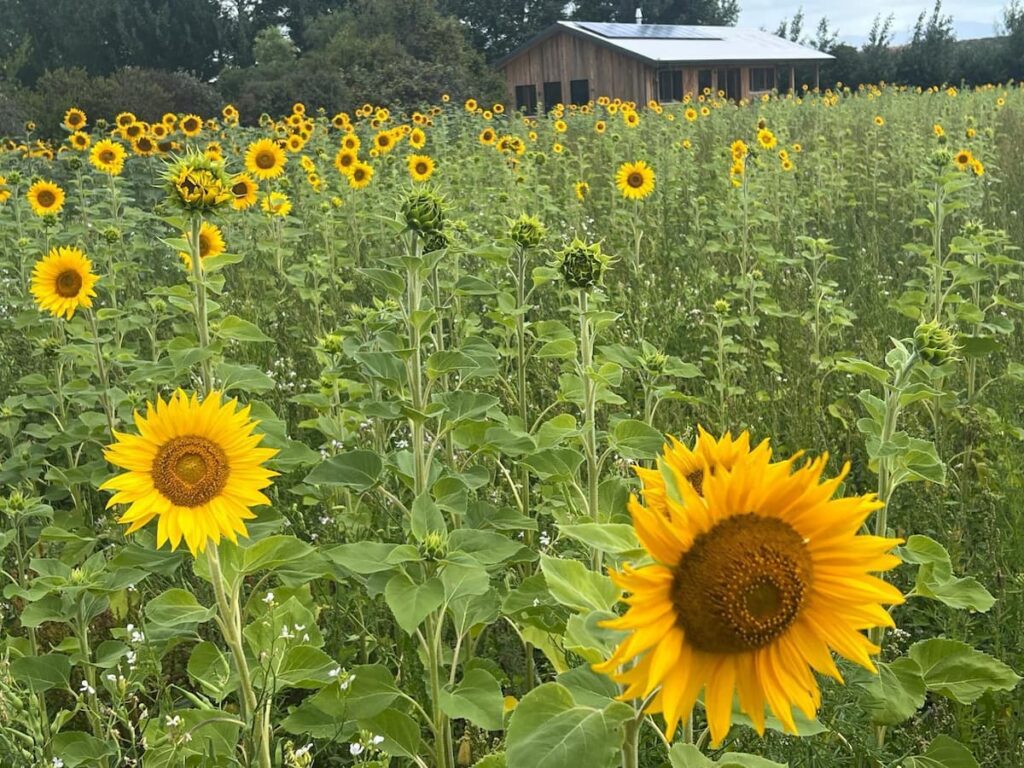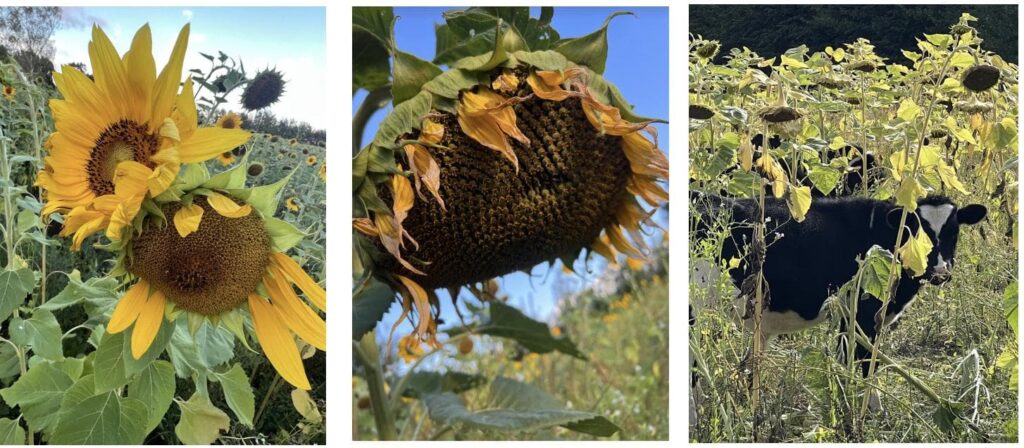Written by Jane Riddiford
As we picked our way through the cow pats, I heard beside me a small but confident voice, “those calves look in good condition, fat and very shiny”. This was Wilson, a year four pupil from Kahutara School , one of the local primary schools that Rod and I are working with. Thoughts flashed through my mind, how might he feel to know that the sea of yellow that we had all enjoyed together was now gone? But then I thought, “He’s a farm kid, he perhaps knows more than most that nothing is here forever.” … “Those calves are fat with all the sunflowers they have just finished eating,” I said and he seemed to understand. As we walked along, we spoke of the low fertile ground we were on, just like the farm he lives on; ground carved out and made fertile by the frequent flooding of the river.
Last time I was with his class we were on the high, now dry, ground on the other side of the farm, where we have been thinking about improving the soil. In the paddocks around our house, it had seemed like a good idea to plant maize and it was, until the rains of 2023 came and didn’t stop. We watched in horror as several tractors and a truck and trailer ground to a halt; completely bogged and unable to move. Finally when the crop was removed great machine made ruts covered the paddock; it looked like a war zone. “I think we need to give it a rest for a year or two,” said Ross, one of the guys we regeneratively share-farm with. “I’ll put in a multi-species crop and chuck in a few sunflowers along with all the other things’ (23 species in all) . As the first flowers started to show we had no idea what an explosion of sunflowers it would turn out to be. Over the next six weeks we woke in delight as the whole paddock became a sea of sunflowers, with a collection of smaller flowers; peas, beans, clover, phacelia, buckwheat, linseed, fetch and plenty more nestled beneath them.
At the time I was talking to staff at Kahutara and Martinborough Primary Schools about their involvement in our river project, Te Reo o te Wai (Voices of the Water). I casually suggested they might like to sell the sunflowers as a fundraiser. They leapt at the opportunity and over the next couple of weeks we picked and delivered carloads of sunflowers to each of the schools which in turn shaped lessons in science and maths. “This morning we made $140.00 in fifteen minutes,” one boy said with pride as I pulled up to deliver more sunflowers.

Thanks to the generosity of Green Jersey Cycle Tours, the opportunity evolved and soon busloads of children from both schools came to enjoy the sunflower field with us. We created a storytelling space in the middle and Rod told a world story about the wisdom of a woman who knew how to let the earth rise up to feed the village, followed by a slimmed down botany lesson on the life cycle of a seed helped by Holly, one of my Global Generation colleagues from London, who happened to be staying with us. Then with secateurs in hand a wild adventure began. As small groups of children made their way through the sunflowers, I caught snatches of conversation “there’s heaps in there … it’s like a maze but you have to create your own path … that one’s cool it’s just starting to bloom …. let’s get the big dead ones that have thousands of seeds … look there are loads of bees ” .

After the picking frenzy Rod and I visited each of the classes back at school and ran a creative written and spoken word session about the journey of a sunflower seed. Here is a sample of the words that came.

It wasn’t only us who thought the sunflowers were amazing. “Lots of farmers have been asking us about multi-species cover crops … I think we should do it in more paddocks across the farm, ” said Rihi, the other half of our share farming arrangement. “ Perhaps you really can make a sunflower maze, lots of people come to Martinborough with families and they want to do something different than go to vineyards” said Bronwyn, one of the bus drivers from Green Jersey Cycle Tours. “Yes why not, we could even offer high tea in the middle of it all.“ Now ideas are brewing for next year about hosting a sunflower extravaganza; a dance of nature in many forms and a feeding farm and feeding community way of garnering support for the educational activities we would like to offer.

